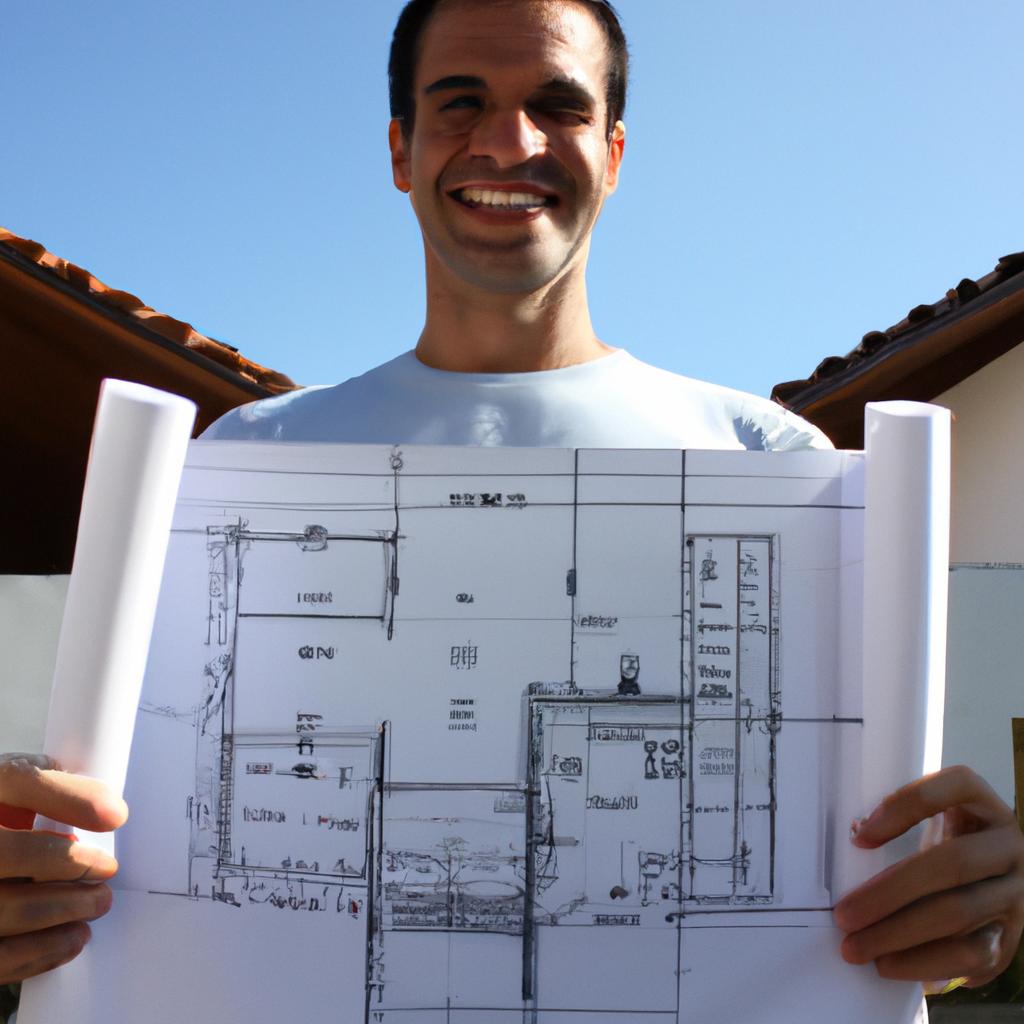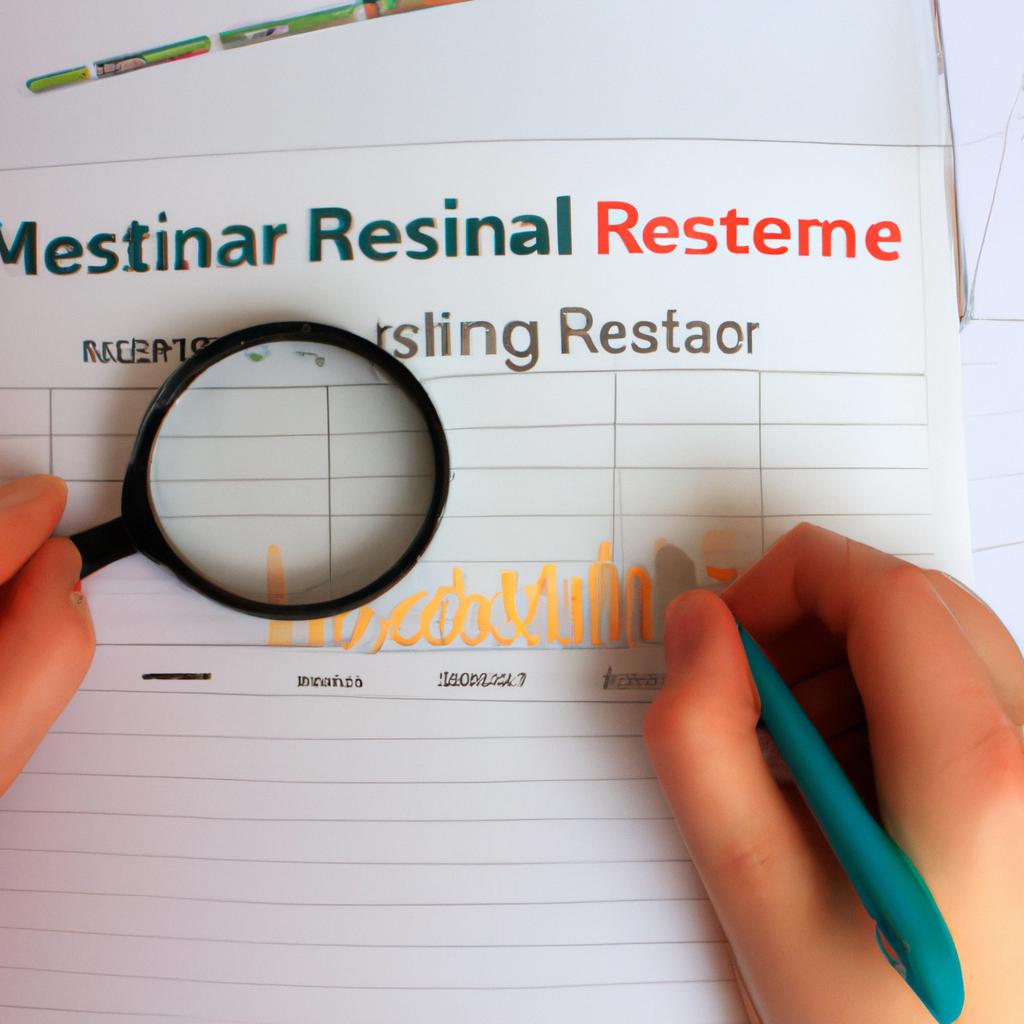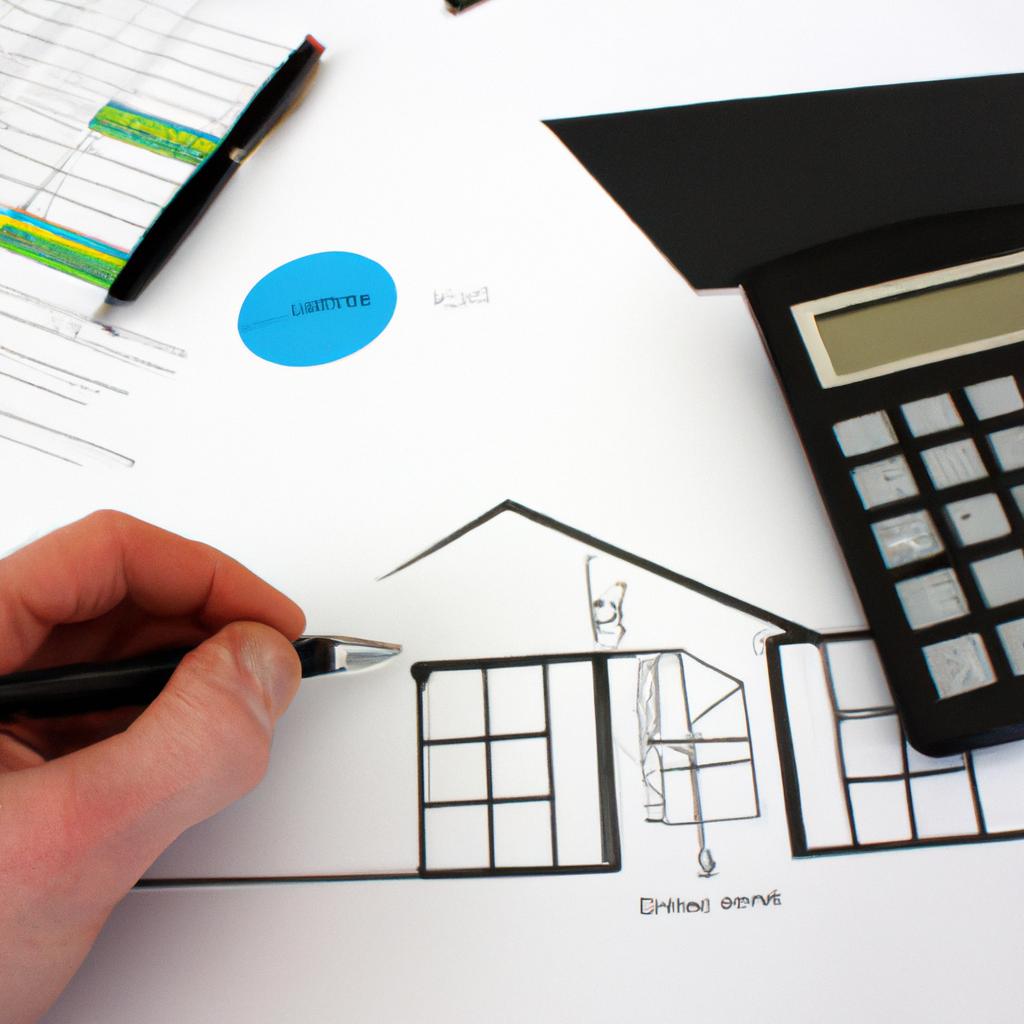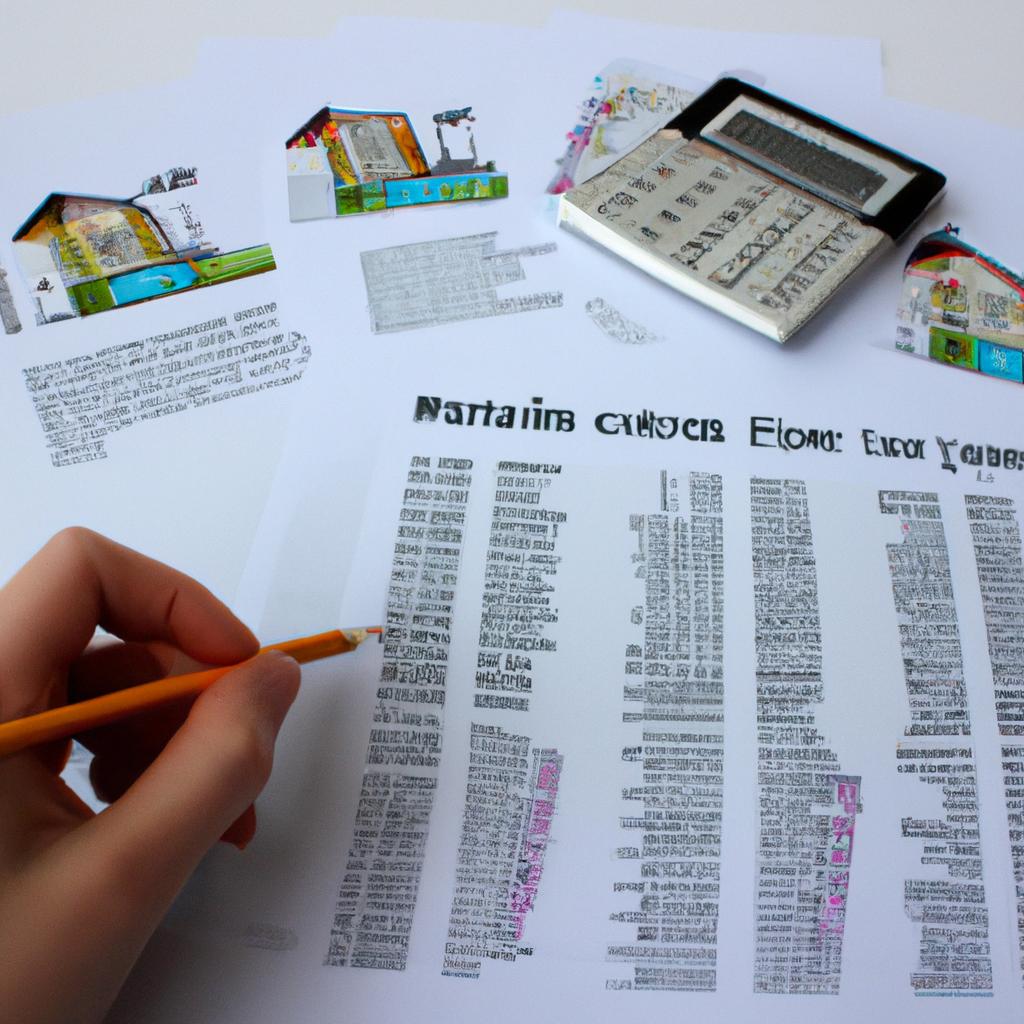Real estate investment has long been regarded as a lucrative venture, providing investors with opportunities for substantial returns. Among the various strategies employed in this field, fix and flip stands out as an intriguing approach that involves purchasing distressed properties, renovating them, and selling them at a higher price to generate profit. For instance, consider the case of John Smith, an investor who identified a dilapidated house in a desirable neighborhood. After acquiring the property at a discounted price due to its poor condition, he meticulously renovated it by updating the kitchen and bathrooms, improving the curb appeal, and adding modern amenities. Subsequently, Mr. Smith successfully sold the property at a significantly higher value within six months of purchase.
The fix and flip strategy is appealing due to its potential to yield quick profits through strategic renovations and market timing. However, executing this investment requires careful planning and consideration of several crucial factors. Firstly, thorough research into local real estate markets is essential to identify areas where demand for renovated properties is high. This information enables investors to target neighborhoods with growth potential while avoiding oversaturated markets or declining communities. Moreover, assessing renovation costs accurately is vital to ensure profitability; excessive expenses can erode potential gains whereas insufficient improvements may result in difficulties during resale. Additionally, effective project management is crucial to meet timelines and budget constraints. This involves coordinating with contractors, overseeing the renovation process, and ensuring that all necessary permits and inspections are obtained.
Furthermore, securing financing for the project is another critical aspect of fix and flip investing. Investors can explore various options such as traditional bank loans, private lenders, or even using their own funds. Evaluating the terms, interest rates, fees, and repayment plans of different financing options is essential to select the most suitable option for the investment.
In addition to financial considerations, it is important to have a solid understanding of local regulations and zoning laws. Familiarizing oneself with these legal aspects ensures compliance during the renovation process and avoids any potential issues that could delay or hinder the resale.
Lastly, successful fix and flip investors also consider market trends and timing. Understanding when to buy a property at a discounted price based on market conditions and when to sell it for maximum profit requires keeping an eye on real estate trends, economic indicators, interest rates, and buyer preferences.
Overall, while fix and flip investing can be a profitable venture in real estate, it requires careful planning, thorough research, effective project management skills, proper financing arrangements, knowledge of local regulations, and an understanding of market dynamics. By considering these factors diligently and making informed decisions throughout the process, investors can increase their chances of success in this strategy.
Finding the Right Property
Imagine you come across a dilapidated house in an up-and-coming neighborhood. The exterior is worn, with peeling paint and overgrown weeds in the front yard. Despite its current state, you have a vision of transforming this property into a beautiful home that will attract potential buyers. This scenario exemplifies one aspect of finding the right property for fix and flip real estate investments.
To successfully find the ideal property to invest in, there are several key considerations to keep in mind:
-
Location: Location plays a crucial role in determining the success of your fix and flip venture. Look for properties situated in desirable neighborhoods with good schools, amenities, and access to transportation. A prime location not only ensures higher market value but also attracts more interested buyers.
-
Condition: Assessing the condition of a prospective investment property is vital before making any decisions. While some investors prefer properties requiring minimal repairs, others seek out distressed homes or those with significant renovation potential. Consider factors such as structural integrity, cosmetic upgrades needed, and the overall feasibility of completing renovations within budget constraints.
-
Market Analysis: Conduct thorough market research to understand trends and demands in your target area. Analyze comparable sales data (comps) to determine fair market value estimates for renovated properties similar to what you envision creating through your fix and flip project.
-
Financial Viability: Evaluate the financial viability of each potential investment by considering acquisition costs, estimated renovation expenses, carrying costs during renovation period, projected selling price after renovation completion, and expected profit margin upon resale.
By following these guidelines when searching for properties suitable for fix and flip projects, investors increase their chances of achieving favorable outcomes while minimizing risks involved.
Transitioning towards “Determining the Renovation Budget,” it becomes imperative next to strategize how much should be allocated towards improving the acquired property’s condition without overspending on unnecessary features or jeopardizing the overall profitability of the project.
Determining the Renovation Budget
With a suitable property in hand, the next crucial step is to determine the renovation budget. By carefully assessing and allocating funds for necessary repairs and upgrades, investors can ensure that their fix and flip project stays on track financially.
To illustrate the importance of setting a realistic renovation budget, let’s consider an example. Imagine you have acquired a distressed property at a below-market price with plans to renovate it before selling it for profit. The property requires significant structural repairs, including roof replacement, foundation reinforcement, and plumbing system updates. Additionally, cosmetic improvements such as kitchen remodeling and new flooring are needed to enhance its overall appeal.
When determining your renovation budget, keep these key points in mind:
- Conduct thorough inspections: Before finalizing your budget, hire professional inspectors to assess all aspects of the property thoroughly. Their expertise will help identify any hidden issues that may require additional funding.
- Prioritize essential repairs: Focus on addressing critical repair needs first to ensure the property meets safety standards and building codes. Allocating a portion of your budget specifically for these core repairs safeguards against unexpected expenses down the line.
- Account for design choices: While aesthetics play a vital role in attracting potential buyers, be mindful not to overspend on non-essential design elements or personal preferences that might not align with market trends or buyer preferences.
- Include contingency funds: It’s wise to set aside a percentage of your renovation budget as contingency funds – typically around 10% -15%. These extra funds act as a buffer against unforeseen challenges or additional costs that may arise during the renovation process.
Consider this table outlining estimated costs for various renovations based on industry averages:
| Type of Renovation | Estimated Cost Range |
|---|---|
| Roof Replacement | $5,000 – $12,000 |
| Foundation Repairs | $8,000 – $15,000 |
| Kitchen Remodel | $10,000 – $30,000 |
| Flooring Upgrades | $3,000 – $7,000 |
In conclusion, determining the renovation budget is a critical step in any fix and flip project. By conducting thorough inspections, prioritizing essential repairs, considering design choices wisely, and including contingency funds, investors can set realistic budgets that ensure profitability while minimizing financial risks.
Once you have established your renovation budget, the next vital aspect of executing a successful fix and flip project involves hiring reliable contractors who can bring your vision to life.
Hiring Reliable Contractors
Section H2: Determining the Renovation Budget
Having established how crucial it is to determine an appropriate renovation budget, let us now delve into another vital aspect of successful fix and flip projects – hiring reliable contractors.
Section H2: Hiring Reliable Contractors
To ensure a smooth and efficient renovation process for your fix and flip project, it is imperative to hire reliable and skilled contractors. Choosing the right team can make all the difference in achieving your desired outcome. Let’s explore some key considerations when selecting contractors by examining a hypothetical scenario.
Example Scenario:
Imagine you have purchased a property with potential for significant profit through renovations. You decide to convert a run-down duplex into two modern and attractive apartments. To accomplish this vision, you need to assemble a team of professionals who will execute your plan effectively while adhering to deadlines and maintaining quality standards.
Considerations When Hiring Contractors:
-
Expertise:
Look for contractors who specialize in the specific type of renovation work required for your project. For our example scenario, seek out professionals experienced in apartment conversions or residential remodeling. -
Reputation:
Research each contractor’s reputation within the industry and among their previous clients. Check online reviews, ask for references, and inquire about completed projects similar to yours. -
Price Estimates:
Obtain detailed price estimates from multiple contractors before making any decisions. This allows you to compare costs and assess whether they align with your predetermined renovation budget. -
Communication Skills:
Effective communication between you as the investor and the contractor is essential throughout the entire process. Ensure that potential candidates are responsive, listen attentively to your requirements, offer valuable suggestions, and provide regular progress updates.
Table: Factors to Consider When Hiring Contractors
| Factor | Importance | Description |
|---|---|---|
| Expertise | High | Specialization in relevant areas of renovation work |
| Reputation | High | Positive track record and favorable feedback from previous clients |
| Price Estimates | Medium | Reasonable pricing that aligns with your renovation budget |
| Communication Skills | High | Effective communication, responsiveness, and regular progress updates |
By carefully considering these factors when hiring contractors for your fix and flip project, you can ensure a successful renovation process. Remember to prioritize expertise, reputation, price estimates, and strong communication skills in your decision-making process. With the right team in place, you are well on your way to maximizing profits through strategic renovations.
Transition into subsequent section (H2) about “Renovating with Profit in Mind”:
With reliable contractors secured for your fix and flip project, let’s now explore how to approach the renovation phase with profit as the primary focus.
Renovating with Profit in Mind
Transitioning from the previous section on hiring reliable contractors, we now delve into the crucial aspect of renovating properties with profit in mind. To illustrate this concept, let’s consider a hypothetical case study involving a fix and flip project in an up-and-coming neighborhood.
In our scenario, imagine acquiring a distressed property at a discounted price due to its outdated appearance and wear. The goal is to transform it into an attractive living space that appeals to potential buyers or renters and maximizes return on investment. To achieve this, several key strategies can be employed:
-
Focus on High-Impact Areas:
- Kitchen and Bathrooms: These areas often have the highest impact on buyer perception.
- Curb Appeal: Enhancing the property’s exterior aesthetics creates a positive first impression.
- Flooring: Replacing worn-out carpets or dated flooring materials can significantly improve the overall appeal.
-
Opt for Cost-Effective Upgrades:
- Paint: A fresh coat of paint can do wonders in rejuvenating tired walls and ceilings.
- Lighting Fixtures: Updating light fixtures provides a modern touch without breaking the budget.
- Hardware Updates: Swapping old door handles, faucets, and cabinet knobs adds value at minimal cost.
-
Consider Energy Efficiency:
- Insulation: Adding insulation improves energy efficiency and reduces utility costs for future occupants.
- Energy-Efficient Appliances: Installing appliances with high energy ratings attracts environmentally-conscious buyers.
-
Stay Within Budget:
- Plan Ahead: Create a detailed renovation plan to avoid unnecessary expenses or delays.
- Obtain Multiple Quotes: Solicit quotes from different suppliers and contractors to ensure competitive pricing.
To better understand these strategies’ effectiveness, refer to the following table outlining estimated initial investment versus potential increase in property value after renovation:
| Renovation Strategy | Estimated Investment ($) | Potential Increase in Value ($) |
|---|---|---|
| Kitchen Upgrade | 10,000 | 25,000 |
| Bathroom Remodel | 7,500 | 15,000 |
| Exterior Landscaping | 5,000 | 12,000 |
| Flooring Replacement | 8,000 | 18,000 |
By employing these renovation strategies and considering potential returns on investment such as those listed in the table above, investors can maximize their profit margins while transforming distressed properties into desirable homes.
In the upcoming section on marketing and selling the property, we will explore effective techniques for attracting buyers or renters and ensuring a smooth transition from the renovation phase to finalizing a successful sale.
Marketing and Selling the Property
Having explored the essential strategies for successful real estate investing, let us now delve into the crucial aspect of renovating properties with profit in mind. To illustrate this concept, consider a hypothetical case study: imagine purchasing a run-down property at a significantly discounted price due to its poor condition. By implementing strategic renovations and improvements, you transform it into an attractive, modern home that commands a higher market value.
To maximize your return on investment (ROI) during the renovation process, keep these key considerations in mind:
-
Budgeting wisely:
- Begin by thoroughly assessing the property’s needs and creating a detailed budget plan.
- Allocate funds appropriately between repairs, upgrades, and aesthetic enhancements.
- Stay mindful of cost overruns and unexpected expenses by building contingency funds into your budget.
- Regularly monitor expenses throughout the renovation to ensure adherence to financial targets.
-
Prioritizing impactful changes:
- Focus on renovations that yield significant returns rather than merely cosmetic updates.
- Invest in core elements such as structural repairs, electrical systems, plumbing fixtures, and roofing.
- Enhance energy efficiency through insulation or installing eco-friendly appliances.
- Consider popular features that attract buyers like open floor plans or outdoor living spaces.
-
Attention to detail:
- Pay close attention to craftsmanship and quality in all aspects of renovation work.
- Utilize skilled contractors who can execute your vision effectively within established timelines.
- Select durable materials that offer both visual appeal and longevity.
- Incorporate tasteful design choices that align with current trends while maintaining broad market appeal.
By adhering to these principles throughout the renovation process, you increase the likelihood of achieving substantial profits when it comes time to sell the property. Remember that each decision should contribute towards enhancing both aesthetics and functionality in order to generate optimal ROI.
Moving forward from our exploration of profitable renovations, we will now shift our focus to the critical topic of marketing and selling the property. By employing effective strategies in this phase, you can maximize exposure, attract potential buyers, and ultimately secure a successful sale.
[Transition sentence] As we transition into evaluating the return on investment for fix-and-flip properties, let us explore how effectively marketing and selling the renovated property play a vital role in achieving your desired financial goals.
Evaluating the Return on Investment
Having discussed effective marketing and selling strategies for fix and flip properties, we now turn our attention to evaluating the return on investment. This crucial step allows investors to assess the profitability of their real estate venture and make informed decisions for future investments.
Section – Evaluating the Return on Investment:
To illustrate this process, let’s consider a hypothetical case study involving a fix and flip property located in a desirable neighborhood. The investor purchased the property at $200,000 with an additional $50,000 invested in renovations. After completing the necessary repairs and improvements, they put it back on the market with an asking price of $350,000.
When evaluating the return on investment for a fix and flip property, several factors come into play. Here are four key considerations:
- Purchase Costs: It is essential to account for all expenses related to acquiring the property, such as purchase price, closing costs, agent fees, and any financing charges.
- Renovation Expenses: Calculate all costs associated with rehabilitating or upgrading the property, including materials, labor fees, permits, inspections, and unexpected contingencies.
- Holding Costs: These encompass ongoing expenses during the holding period before selling the flipped property—examples include mortgage payments, insurance premiums, utilities, property taxes, HOA fees (if applicable), and maintenance costs.
- Sale Proceeds: Finally take into consideration potential sales-related expenditures like agent commissions or listing fees that may affect your overall profit margin upon sale.
To further comprehend these aspects within context while comparing different scenarios effectively; refer to Table 1 below:
Table 1 – Fix and Flip Investments
| Scenario | Total Investment ($) | Net Profit ($) |
|---|---|---|
| 1 | $250,000 | $50,000 |
| 2 | $275,000 | $75,000 |
| 3 | $200,000 | -$10,000 |
| 4 | $300,000 | $20,000 |
Table 1 highlights various investment scenarios with their respective total investments and net profits. This visual representation allows investors to compare potential outcomes and make informed decisions when selecting fix and flip properties.
In conclusion, evaluating the return on investment is a critical step in the fix and flip process. By considering all costs involved from purchase to sale proceeds, investors can determine whether a particular property offers a favorable return on investment. Utilizing tables like Table 1 assists in visually analyzing different scenarios for better decision-making while engaging emotionally through the anticipation of positive returns.




